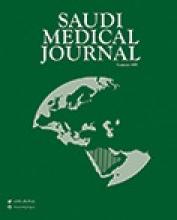Abstract
OBJECTIVE: Nitric oxide is known to be present in the exhaled air of normal subjects and at higher concentrations in asthmatics. The aim of this study was to measure exhaled nitric oxide levels in patients admitted to hospital with acute exacerbations of asthma, or chronic obstructive pulmonary disease, or with pneumonia.
METHODS: Within 24 hours of admission exhaled nitric oxide levels were measured by a chemiluminescent analyzer in 11 patients with acute sever asthma, 19 patients with acute exacerbation of chronic obstructive pulmonary disease, and in 12 patients with pneumonia. In asthmatics measurements were made on 3 occasions, at day 1, 4, and 28 and were related to changes in peak expiratory flow rate.
RESULTS: On admission median exhaled nitric oxide levels (range) were significantly higher in asthmatics 22 (9.3-74) parts per billion in comparison to patients with chronic obstructive pulmonary disease 10.3 (2.7-34) parts per billion; p<0.01, pneumonia 7 (4-17) parts per billion; p<0.001, and normal subjects 8.7 (5-13.3) parts per billion; p<0.001. Following treatment the asthmatics had a significant reduction in their exhaled nitric oxide levels from 22 (9.3-74) parts per billion on day 1 to 9.7 (5.7-18.3) parts per billion on day 28; p=0.005. Peak expiratory flow rate measurements increased from 200 (120-280) l/min on day 1 to 280 (150-475) l/min on day 4; p<0.05 and to 390 (150-530) l/min on day 28; p<0.01. A strong negative correlation existed between peak expiratory flow rate measurements and exhaled nitric oxide levels in asthmatics on day 28 (r=-0.70; p=0.017).
CONCLUSION: Acute exacerbations of asthma are associated with increased levels of exhaled nitric oxide in contrast to exacerbations of chronic obstructive pulmonary disease and acute pneumonia. Exhaled nitric oxide may be a useful indirect marker of asthmatic airway inflammation. The differing time course of response of nitric oxide to peak flow measures suggests that these two measures are reflecting differing airway events.
- Copyright: © Saudi Medical Journal
This is an open-access article distributed under the terms of the Creative Commons Attribution-Noncommercial-Share Alike 3.0 Unported, which permits unrestricted use, distribution, and reproduction in any medium, provided the original work is properly cited.






